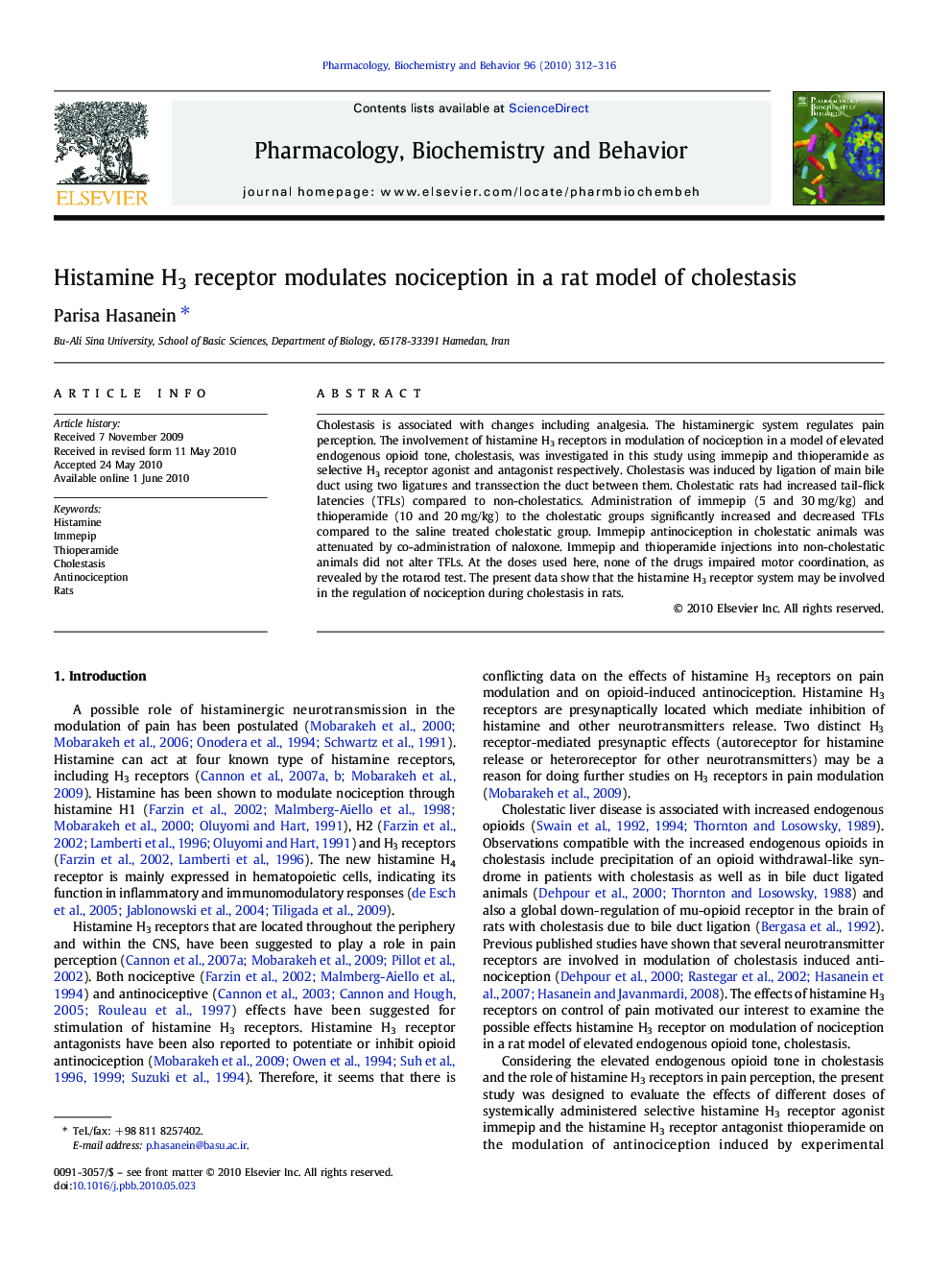| Article ID | Journal | Published Year | Pages | File Type |
|---|---|---|---|---|
| 2013290 | Pharmacology Biochemistry and Behavior | 2010 | 5 Pages |
Abstract
Cholestasis is associated with changes including analgesia. The histaminergic system regulates pain perception. The involvement of histamine H3 receptors in modulation of nociception in a model of elevated endogenous opioid tone, cholestasis, was investigated in this study using immepip and thioperamide as selective H3 receptor agonist and antagonist respectively. Cholestasis was induced by ligation of main bile duct using two ligatures and transsection the duct between them. Cholestatic rats had increased tail-flick latencies (TFLs) compared to non-cholestatics. Administration of immepip (5 and 30Â mg/kg) and thioperamide (10 and 20Â mg/kg) to the cholestatic groups significantly increased and decreased TFLs compared to the saline treated cholestatic group. Immepip antinociception in cholestatic animals was attenuated by co-administration of naloxone. Immepip and thioperamide injections into non-cholestatic animals did not alter TFLs. At the doses used here, none of the drugs impaired motor coordination, as revealed by the rotarod test. The present data show that the histamine H3 receptor system may be involved in the regulation of nociception during cholestasis in rats.
Related Topics
Life Sciences
Biochemistry, Genetics and Molecular Biology
Biochemistry
Authors
Parisa Hasanein,
